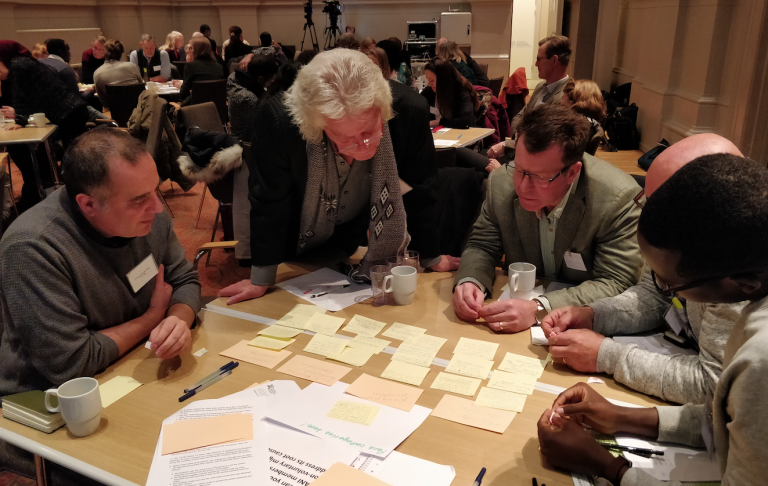By: Dr. Alin Kadfak, Department of Urban and Rural Development, SLU
Did you know that about half of migrants are women? And more migrants migrate within developing countries than crossing North-South borders? Migration does not refer only border crossing, but moving from rural to urban as well as rural to rural within the same country. There are many misperceptions about migration and the root causes of the phenomenon, which bring us to this year SIANI Annual Meeting’s agenda!

Participants interacting during the round table dialogue at the SIANI Annual Meeting 2019. Photo: Alin Kadfak
Every year the SIANI secretariat organises a meeting in Stockholm so our members have a chance to interact with each other and to provide input for the work plan of the year ahead. This year’s theme ‘Migration, Agriculture and Rural Development’, held on 23 January, is in the spotlight as we explore different dimensions of migration and its connections with food and agriculture. Together the members can reflect on this vital topic. And this year, the meeting is well attended from academic, NGOs, government agencies and civil society.
Starting off with welcoming speech by Annika Åhnberg, Chair of the SIANI Steering Committee, who reminds us that forced and voluntary migrations are parted of the human history, and we need to understand the phenomenon in the holistic way. Our first speaker, Sigrun Rawet, SIPRI, brings to the meeting the discussing around recent UN Security Council Resolution on hunger and conflict. No doubt that conflict brings hunger, but what if ‘ending hunger can reduce conflict!’. UN World Food Programme is now doing pilot projects in four countries, hoping to reduce famine, the main cause of conflict.
Ingela Winter-Norberg, Sida, raises an important point that often refugees and immigrants are being excluded from development policy. The key question we need to ask is ‘How can we increase economic self-reliance activities for migrants?’ to ensure that they can support themselves economically in countries of destination.
Our next speaker Jesper Bjarnesen, Nordic Africa Institute, conveys a strong message that ‘migration is by far the most positive than negative, but it has been hindered by regulations’. And the challenge to migrant problem is when the government sees migrants as threat instead of source of labour. The way forward, he suggests, is to shift the narrative from ‘migrant rights’ to ‘labour rights’.
Aster Asgedom, County board Västra Götaland, shares how she continues supporting rural development back home in Ethiopia, by connecting the supports from Swedish NGOs, civil societies and academic. Being migrant herself, she reflects on how nature is very important for integration process. For instance, Aster together with other organisations in Gothenburg organised outdoor activities to welcome new refugees into the country.
Round Table Dialogue is the highlight of the day. This interactive platform asks members to join and help answer ‘How can you together with other SIANI members help to minimise non-voluntary migration and address its root causes?’. Each group has one and half hour to brainstorm, discuss and agree on the main statement to help directing SIANI’s work plan for 2019. Please stay connected to see the results from Round TableDialogue at SIANI.se, with more activities to continue the migration and rural development dialogue.
Link to SIANI’s webpage with videos and documentation from the meeting.
